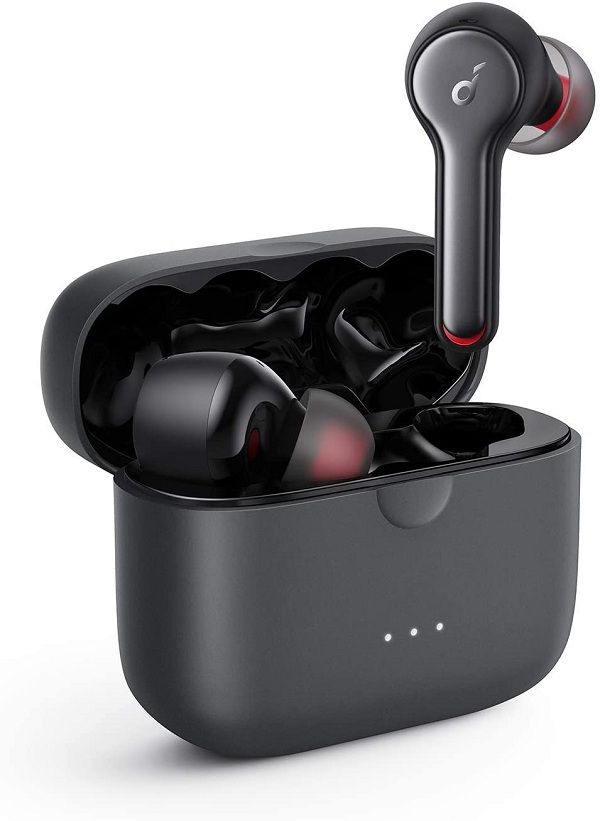The Power of Perception: Why Bright Colors Capture Attention
Perception is the gateway through which humans interpret and respond to their environment. It shapes our cognition, influencing how we prioritize sensory information and make decisions. Among the myriad visual cues that command attention, color stands out as one of the most potent. Bright hues, in particular, have an uncanny ability to draw the eye and sustain focus, a phenomenon rooted in both evolutionary biology and psychological mechanisms. This article explores the intricate relationship between perception and visual attention, highlighting how color—especially brightness—can be strategically leveraged to enhance communication and engagement.
To illustrate these principles, consider the role of vibrant elements in modern design, such as the colorful wild cards in card games or marketing visuals. Understanding the science behind why these colors work can empower creators to craft more effective visual messages. For further insights into innovative visual elements, explore wild jokers free, a contemporary example of how brightness and color can captivate audiences.
- The Psychology of Color: How Bright Colors Influence Human Attention
- Visual Salience and the Brain: The Neural Basis of Attention Capture
- The Mathematics of Attention: Pattern Recognition and Probability in Visual Cues
- Wild Jokers as a Case Study: Bright Colors and Attention in Modern Design
- The Impact of Color Perception on User Engagement and Decision-Making
- Non-Obvious Factors That Enhance Perception and Attention
- Depth of Perception: Beyond Brightness to the Complexity of Visual Stimuli
- Practical Applications and Strategies to Capture Attention Using Color
- Conclusion: Harnessing the Power of Perception for Effective Visual Communication
The Psychology of Color: How Bright Colors Influence Human Attention
From an evolutionary perspective, humans have developed a heightened sensitivity to certain colors due to survival advantages. Bright colors such as red, yellow, and orange often signal food, danger, or reproductive cues, making them inherently salient in our visual field. For example, ripe fruits or warning signals in nature utilize vivid hues to immediately attract attention and prompt action. This biological predisposition continues to influence modern perception, where bright colors stand out against more subdued backgrounds, capturing our focus effortlessly.
Psychologically, bright colors evoke strong emotional responses. Red can stimulate excitement or urgency, yellow often induces feelings of happiness and optimism, while orange combines energy with warmth. Conversely, dull or muted colors tend to recede into the background, reducing the likelihood of capturing attention. Studies have shown that visual displays with high color contrast and saturation can prolong viewer engagement, as the eye naturally gravitates toward stimuli that differ sharply from their surroundings.
Empirical research supports these observations. A 2014 study published in the Journal of Experimental Psychology found that subjects spent 30% more time looking at brightly colored objects compared to dull ones, underscoring the influence of color intensity on attention span. Such findings highlight the importance of strategic color use in environments where capturing immediate attention is critical, such as advertising or user interface design.
Visual Salience and the Brain: The Neural Basis of Attention Capture
How the Brain Processes Visual Stimuli
The human brain employs a complex network to process visual information. The primary visual cortex, located in the occipital lobe, acts as the initial recipient of incoming signals. From there, information about color, shape, and movement is relayed to higher-order areas responsible for recognition and attention. Notably, the brain prioritizes stimuli that are visually salient—those that stand out due to brightness, contrast, or motion—making them more likely to attract focus.
Role of the Visual Cortex in Prioritizing Bright Colors
Research using functional MRI (fMRI) demonstrates that bright, saturated colors activate the visual cortex more strongly than dull hues. This heightened neural response correlates with faster reaction times and increased gaze fixation on bright objects, illustrating how our neural architecture is tuned to detect and prioritize vivid stimuli. This neural mechanism explains why, in a crowded visual field, bright elements tend to dominate our attention.
Connection Between Neural Response and Behavioral Engagement
The direct link between neural activation and behavior is evident in everyday scenarios. For instance, neon signs or brightly colored advertisements are often placed where neural response is strongest, ensuring quick recognition and recall. This neural-behavioral coupling underscores the importance of brightness in designing visual cues that aim to capture and hold attention effectively.
The Mathematics of Attention: Pattern Recognition and Probability in Visual Cues
Pattern Recognition as a Focus Driver
Humans are naturally adept at recognizing familiar patterns, which serve as efficient cues for attention. For example, the mathematical significance of numbers like 5625 = 5^4 can be likened to visual patterns that repeat or mirror, thereby attracting focus. Recognizable patterns, whether geometric, numerical, or symbolic, reduce cognitive load and facilitate quicker engagement. In visual design, repeating shapes or symmetrical arrangements leverage this principle to guide the viewer’s gaze.
Probability of Attention Shift Based on Visual Complexity
The likelihood of a viewer shifting attention depends on the visual complexity and salience of stimuli. Less complex, high-contrast elements increase the probability of focus, while overly cluttered scenes diminish it. Mathematical models, such as signal detection theory, quantify this relationship by considering variables like stimulus intensity and background noise, predicting attention shifts with considerable accuracy.
Randomness and Predictability in Visual Stimuli
The cycles of random number generators in digital environments mimic the unpredictability of natural stimuli. Randomness in visual cues can either attract attention through surprise or cause habituation if overused. Striking a balance—introducing predictability within a framework of variation—can optimize attention, as demonstrated by dynamic advertising banners that alternate bright and familiar patterns to sustain viewer interest.
Wild Jokers as a Case Study: Bright Colors and Attention in Modern Design
Vibrant Colors in Card Games and Engagement
Wild Jokers exemplify how vibrant, unpredictable colors can engage players instantly. Their visual design often includes bold reds, yellows, and contrasting patterns, which stand out amid the more subdued suits and numbers. This use of brightness not only captures attention but also signifies their unique role, challenging the perceptual expectations associated with standard cards.
Challenging Perceptual Expectations and Maintaining Interest
The wild element introduces an element of surprise, breaking the visual monotony. By employing unexpected colors and shapes, designers leverage the brain’s sensitivity to novelty, ensuring sustained engagement. Such strategies are broadly applicable beyond gaming, influencing marketing visuals that aim to stand out in crowded environments.
Comparison to Other Attention-Grabbing Elements
| Visual Element | Effect on Attention |
|---|---|
| Bright Colors (e.g., Wild Jokers) | Immediate focus and heightened engagement |
| Motion (e.g., animations) | Draws attention through movement cues |
| Contrast (e.g., black on white) | Creates visual hierarchy and focus |
The Impact of Color Perception on User Engagement and Decision-Making
Perception of brightness and color saturation significantly influences choices in digital environments. For example, e-commerce platforms strategically use bright call-to-action buttons—like red “Buy Now” or green “Add to Cart”—to prompt immediate responses. The high visibility of these colors ensures they are among the first elements noticed, guiding user behavior efficiently.
Research indicates that vibrant colors increase perceived value and trustworthiness. An analysis of online advertisements revealed that ads with bright backgrounds yielded 20% higher click-through rates than duller counterparts. This demonstrates that understanding perceptual principles can directly impact marketing success.
Incorporating elements like wild jokers free shows how bold, attention-grabbing visuals can be used effectively in digital interfaces and branding to capture interest and influence decision-making.
Non-Obvious Factors That Enhance Perception and Attention
Interplay of Color with Motion and Contrast
Combining bright colors with motion—such as animated banners or shifting highlights—further amplifies perceptual salience. Contrast also plays a crucial role; pairing vibrant hues with muted backgrounds creates a visual hierarchy that guides focus naturally. For example, a flashing red notification icon against a neutral interface instantly draws the user’s eye, emphasizing urgency or importance.
Cultural and Contextual Influences
Color perception is not universal; cultural contexts shape how colors are interpreted. In Western cultures, white often signifies purity, while in some Asian cultures, it is associated with mourning. Bright colors like red and yellow tend to evoke energy and positivity broadly, but their specific connotations can vary. Designers must consider these nuances when crafting visuals intended for diverse audiences.
Subtle Perceptual Cues Beyond Brightness
Beyond brightness, cues such as texture, gloss, or slight motion can subtly influence attention. For instance, a shiny or reflective surface can create a perception of depth, guiding viewers’ gaze toward focal points. These nuanced cues, when used judiciously, enhance perceptual clarity without overwhelming the viewer.
Depth of Perception: Beyond Brightness to the Complexity of Visual Stimuli
Layered Visual Cues and Hierarchy
Effective visual communication employs multiple cues—color, size, positioning, and motion—to create a hierarchy of attention. For example, a large, brightly colored headline paired with smaller, subdued supporting text directs focus sequentially, ensuring the viewer processes information in intended order. This layered approach aligns with how our perceptual system filters stimuli based on relevance and prominence.
Cognitive Load and Perceptual Filtering
As visual complexity increases, cognitive load rises, potentially overwhelming the viewer and diminishing attention. Balancing simplicity with sufficient detail is crucial. Using bold, bright elements sparingly within a clean layout can make key messages stand out without causing perceptual fatigue.
Balancing Complexity and Clarity
The goal is to create a visual hierarchy that emphasizes important elements while maintaining overall clarity. Strategic use of bright colors for critical information, combined with subtle background cues, ensures the viewer’s focus is directed naturally and effortlessly.
Practical Applications and Strategies to Capture Attention Using Color
Design Principles Informed by Perceptual Science
- Use high contrast between foreground and background to enhance salience.
- Incorporate bright, saturated colors for calls to action or focal points.











